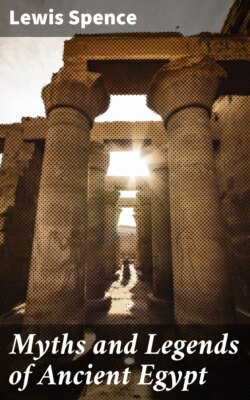Читать книгу Myths and Legends of Ancient Egypt - Lewis Spence - Страница 52
На сайте Литреса книга снята с продажи.
Primitive Conceptions of the Moon
ОглавлениеPrimitive man explains the waning moon as actually dwindling, and it appears to him as if it is being broken in pieces or eaten away. The Klamath Indians of South-west Oregon allude to the moon as 'the One Broken in Pieces,' and the Dacotas believe that when the moon is full a horde of mice begin to nibble at one side of it until they have devoured the whole. To continue Sir J.G. Frazer's argument, he quotes Plutarch to the effect that at the new moon of the month Phanemoth, which was the beginning of spring, the Egyptians celebrated what they called 'the entry of Osiris into the moon'; that at the ceremony called the 'Burial of Osiris' they made a crescent-shaped chest, "because the moon when it approaches the sun assumes the form of a crescent and vanishes"; and that once a year, at the full moon, pigs (possibly symbolical of Set, or Typhon) were sacrificed simultaneously to the moon and to Osiris. Again, in a hymn supposed to be addressed by Isis to Osiris it is said that Thoth
Placeth thy soul in the barque Maāt
In that name which is thine of god-moon.
And again:
Thou who comest to us as a child each month,
We do not cease to contemplate thee.
Thine emanation heightens the brilliancy
Of the stars of Orion in the firmament.
In this hymn Osiris is deliberately identified with the moon.[6]
In effect, then, Sir James Frazer's theory regarding Osiris is that he was a vegetation or corn god, who later became identified, or confounded, with the moon. But surely it is as reasonable to suppose that it was because of his status as moon-god that he ranked as a deity of vegetation.
A brief consideration of the circumstances connected with lunar worship might lead us to some such supposition. The sun in his status of deity requires but little explanation. The phenomena of growth are attributed to his agency at an early period of human thought, and it is probable that wind, rain, and other atmospheric manifestations are likewise credited to his action, or regarded as emanations from him. Especially is this the case in tropical climates, where the rapidity of vegetable growth is such as to afford to man an absolute demonstration of the solar power. By analogy, then, that sun of the night, the moon, comes to be regarded as an agency of growth, and primitive peoples attribute to it powers in this respect almost equal to those of the sun. Again, it must be borne in mind that, for some reason still obscure, the moon is regarded as the great reservoir of magical power. The two great orbs of night and day require but little excuse for godhead. To primitive man the sun is obviously godlike, for upon him the barbarian agriculturist depends for his very existence, and there is behind him no history of an evolution from earlier forms. It is likewise with the moon-god. In the Libyan desert at night the moon is an object which dominates the entire landscape, and it is difficult to believe that its intense brilliance and all-pervading light must not have deeply impressed the wandering tribes of that region with a sense of reverence and worship. Indeed, reverence for such an object might well precede the worship of a mere corn and tree spirit, who in such surroundings could not have much scope for the manifestation of his powers. We can see, then, that this moon-god of the Neolithic Nubians, imported into a more fertile land, would speedily become identified with the powers of growth through moisture, and thus with the Nile itself.
Osiris in his character of god of the dead affords no great difficulties of elucidation, and in this one figure we behold the junction of the ideas of the moon, moisture, the under-world, and death—in fact, all the phenomena of birth and decay.
